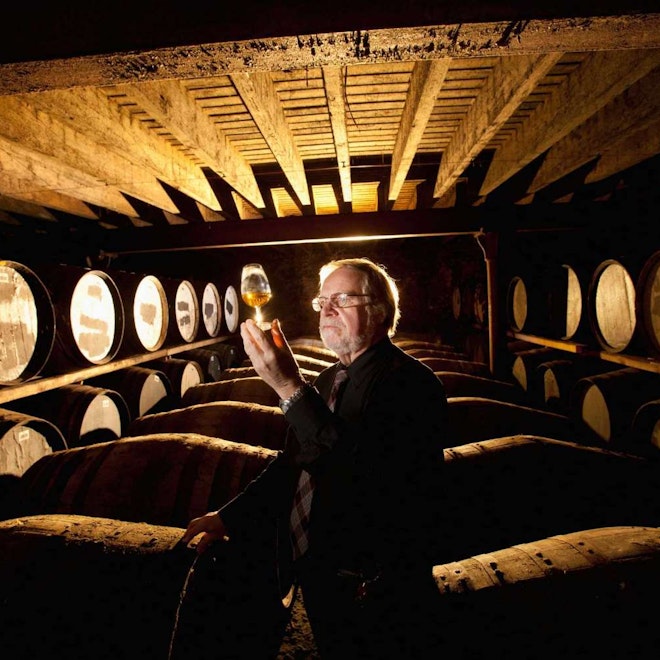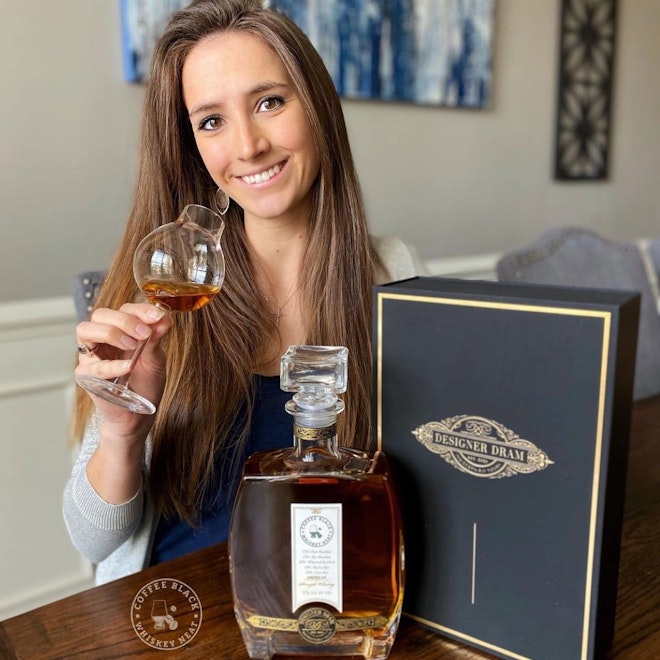Demand for whiskey is growing. More and more people are becoming enthralled by this “brown nectar” and are exploring the wide varieties of whiskies available. If you are new to whiskey and looking to learn more, then let this whiskey for beginners guide help get you started.
From the origins of whiskey to types of whiskey and other whiskey basics, let’s discuss the foundation of knowledge that will help you explore and experiment. One thing becomes quickly evident: everyone has their own unique tastes and preferences. There is no wrong or right when it comes to whiskey so long as you learn about the types of whiskey and flavors and aren’t afraid to try new things.
We’ll present the “whiskey basics” so you can start your exploration with a basic understanding that will get you where you want to go.
Whiskey for Beginners Part 1: The Origin of Whiskey
Whiskey (or whisky) is a distilled alcoholic beverage made from fermented grain mash. Several grains are used to make the various whiskies, including corn, barley, wheat, and rye.
Whiskey is typically aged in wood casks and, depending on the region it’s produced in, will have specific guidelines on the types of barrels used and the aging process. For many whiskies, the production is strictly regulated, but the regulations and parameters required can vary greatly, meaning what is necessary for ‘Scotch whisky’ will be different from ‘American bourbon’. The word “whiskey” comes from the Gaelic word “usice” (or “uisge”), which means “water.” Distilled alcohol was called “aqua vitae” in Latin, meaning “water of life.” This later became “uisce beatha” There were other forms of those words depending on where you were. Modern-day whiskey origins date back to Ireland and Scotland.
You may note that there are two spellings: “whiskey” and “whisky.” When referring to those made in Scotland, Canada, or Japan, “whisky” is used. For those made in the USA or Ireland, “whiskey” is used.

Whiskey for Beginners Part 2: Types of Whiskey
Before we get into the specific types of whiskey, there is a little more basic whiskey information to cover. You’ll generally hear people refer to “blended whiskey” and “single malt.” There is also a third variant less commonly discussed called “grain.”
Single malt whiskey is made exclusively with malted barley, water, and yeast. Many Scottish whiskies are single malt whiskies. Corn, wheat, or rye are used to produce grain whiskey. It may seem similar to single malt, but in this case, the grain is not malted. And blended whiskey is just that, a blend of single malt and grain whiskies. Many standard whiskies you’ll see in stores and bars are blended.
There are five main whiskey producing countries:
- Scottish
- Irish
- American
- Canadian
- Japanese
You’ve likely heard of other types like bourbon, rye, and Tennessee whiskey; they are typically under the category of American whiskey.
Each type of whiskey has its own particular flavor profile, characters, and aromas that can vary greatly. Exploring each kind helps you learn about those flavors and aromas and figure out what you like and to which you’ll gravitate. You’ll find that in the realm of, say, Scottish or American whiskey, you’ll see significant differences between them and some basic similarities because of how they are made (remember there are regulations in place).
In the end, it comes down to preference. For whiskey beginners, will you prefer American rye or bourbon, Irish whiskey, or a Scottish single malt?
Whiskey for Beginners Part 3: Flavor Profiles
The best way to understand the various flavor profiles of whiskey is simply to try them all. You can read all you want, but it comes down to a simple question: what do YOU like?
To help you further understand the whiskey basics, we’ll discuss the typical flavor profiles so, based on your preferences, you’ll know where to start. It’s important to note that these profiles are very general for the style of whiskey. You may find whiskies that defy the norm, which is part of the fun. For example, you might discover a particular bourbon with more similar characteristics to scotch than a typical bourbon.
That said, let’s explore the typical profiles.
Irish Whiskey
Irish whiskey is said to be the grandfather of all whiskies. That point may be up for debate, but we at least know it’s been around for a long time. The whiskey needs to be made in Ireland from a mash of malt and cereal grains and must be aged for at least three years in barrels to be called Irish whiskey. Irish whiskey is often described as fruity and light, with tones from the grains throughout. It’s normally considered smooth and also typically has notes of oak and caramel.
Scotch Whisky
Like its Irish counterpart, for a whisky to be called Scotch, it must be produced in Scotland. Five distinct regions in Scotland produce Scotch: Highlands, Speyside, Lowlands, Campbelltown, and Islay. Each has its own characteristic flavor profile. All are made from three ingredients: water, malted barley, and yeast. Scotch tends to be drier and smokier than other whiskies, and many have strong peat profiles. Some may consider Scotch at one end of the whisky flavor spectrum and bourbon at the other.

American Whiskey
You will experience more variety in American whiskey than the others because there are several different styles. American whiskies are an excellent place to start for whiskey beginners. For simplicity’s sake and to stay within the realm of whiskey basics, we will break them into three groups: bourbon, Tennessee, and other grains like rye and wheat.
Bourbon must be made with at least 51% corn and aged in new oak barrels. The traditional bourbon profile is sweet with tones of vanilla. From there, you’ll find that bourbons can vary widely, which makes them interesting to explore.
Tennessee Whiskey is super recognizable by one of the most famous brands, Jack Daniels. What makes Tennessee Whiskey different from a bourbon is its charcoal filtering process, which gives it a unique taste. Some of these whiskies can be sweeter than bourbon but also can be smooth, more mellow, and slightly smokey.
Rye and wheat (and other lesser used grains) bring different characteristics to whiskey. Several rye whiskies are quite popular. Often rye and wheat are mixed in with bourbon to create different flavors. Rye tends to be drier than bourbon and a bit bolder. Wheat can be more mellow and often is used to make bourbon even smoother. While rye and wheat whiskies may not be as famous as their bourbon and Tennessee whiskey counterparts, don’t overlook them, as they are just as enjoyable to many. Many whiskey beginners start with American whiskies because they tend to be less harsh and there are lots to choose from.
Canadian Whisky
Canadian whisky is considered a close relative to bourbon, but with some intriguing differences. The main difference between Canadian whisky and bourbon is that Canadian whisky tends to have a spicier flavor profile, whereas bourbon is softer and more mellow. There aren’t strict guidelines for the barrel used to age Canadian whisky, but Canadian whisky must be aged for at least three years vs. the two years required for traditional bourbon.
Japanese Whisky
While perhaps less familiar to many whiskey drinkers, Japanese whisky certainly has its place in the world of whisky and have become much more popular around the world as of late. And you’ll notice this based on the cost of getting a bottle, as they tend to be a bit more expensive than other styles. That said, like most things, you get what you pay for – Japanese whiskies are a treat. Most people consider Japanese whisky to be very similar to Scotch, though with far fewer distilleries. There are too many details to discuss in a “whiskey for beginners” story, but if you like Scotch, chances are you’ll also like Japanese whisky.

Whiskey for Beginners Part 4: How to Drink Whiskey
The easiest way to start drinking whiskey with a more finely-tuned eye is to drink the whiskey straight up or neat. You can also cleanse your palate in-between samples with sips of cool water – a practice that many die-hard whiskey drinkers will tell you is the only way to drink whiskey properly.
For whiskey beginners, approach your whiskey in whatever way you are comfortable and enjoy how you want to enjoy it. Many will add a drop or two of water into their glass of whiskey, which often helps “open up” the whiskey. It’s a good idea to experiment and try it neat and neat with a drop or two of water; discover the differences for yourself as you taste.
Many also like to pour their whiskey over ice or mix it into a cocktail. It’s common practice to do this with cheaper whiskies. If you mix a nice scotch with sour mix in a room of devout whiskey enthusiasts, you’ll be driven out of town – but in the end, there are lots of different ways to enjoy it, and you simply need to experiment to see what you prefer.
Whiskey for Beginners Part 5: Where to Start
Getting started does not have to be complicated or intimidating. While some are daunted by wine and wine tastings, whiskey is different. You can get started several different ways:
- Go to a bar and order a whiskey. A friendly bartender may also offer you a few small tastes so you can see if you like one over another. Some bars also offer whiskey “flights” where you can sample 3-5 whiskies simultaneously.
- Asking your friends is another great way to get started. If you have a whiskey enthusiast in your social group, I’m sure they will be more than happy to help you.
- Go to the liquor store and ask their resident whiskey expert to help you. They know that helping customers with things like this leads to more sales, so they won’t hesitate to lend some tips.
Again, there is no right or wrong way to get going. For a whiskey beginner, the key is just to pick one and explore. If you have a few friends that are all whiskey beginners too, you can all explore together. You can also experiment using Designer Dram’s Experience Package. This package provides samples of each barrel and allows you to blend a whiskey precisely to your liking. It’s another way to get started and explore the differences between American whiskies.



